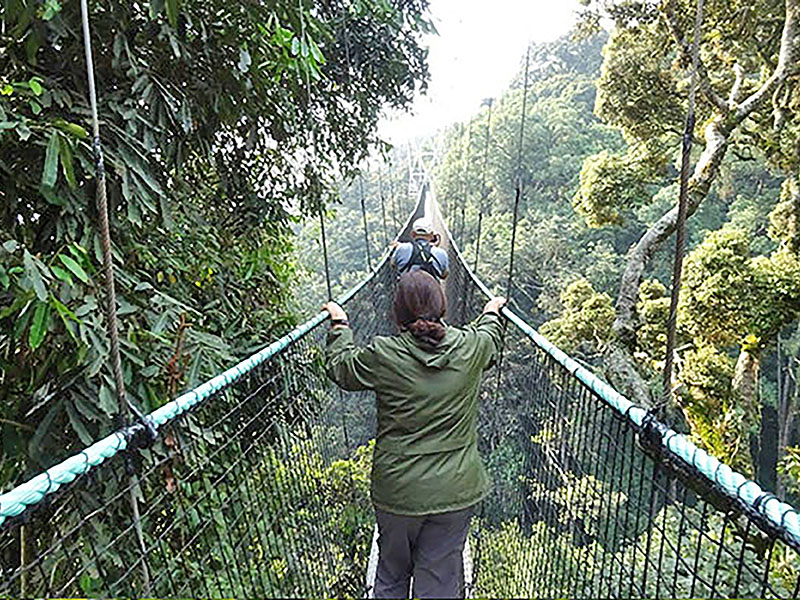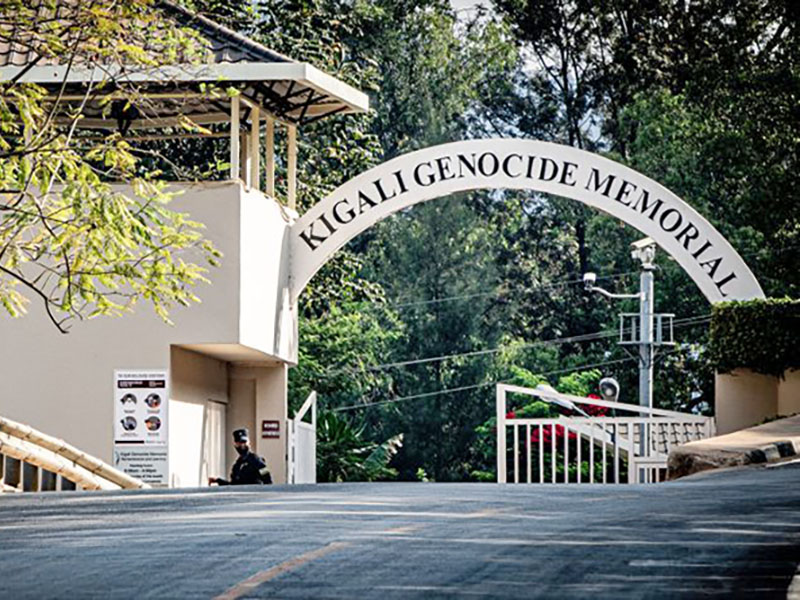World Heritage Sites play a vital role in preserving not just the physical aspects of history, but the deeply rooted cultural and emotional legacies that shape nations. They serve as symbols of shared human experiences, fostering cultural preservation and sustainable development, leaving behind a legacy that transcends generations.
In 2023, Rwanda achieved extraordinary recognition when five of its sites were designated as UNESCO World Heritage Sites—a milestone of immense significance. This acknowledgment not only elevates the country’s historical and natural wonders but also pays tribute to its enduring spirit of remembrance and healing.

Nestled in Rwanda’s Southern and Western Province, Nyungwe National Park is a living testament to the country’s incredible natural heritage. Recently inscribed as Rwanda’s first natural UNESCO World Heritage Site, this pristine rainforest offers a captivating blend of ancient ecosystems and extraordinary biodiversity, making it one of Africa’s most treasured landscapes.
Originally established as a natural reserve in 1933, Nyungwe’s journey to becoming a National Park in 2005 was a bold move by the Rwandan government to strengthen its protection and safeguard the endangered and endemic species that call it home. Today, this remarkable sanctuary sprawls across 101,900 hectares, straddling the border with Burundi. As the largest block of natural forest in the region, Nyungwe stands as a green jewel of biodiversity.
Stepping into Nyungwe feels like entering a world that time forgot. One of Africa’s oldest rainforests, it is a mesmerising mosaic of rushing streams, shadowy valleys, towering trees, mist-cloaked mountains, dappled savannahs, and vast swamps. The park’s sheer variety of habitats creates a thriving environment for an astonishing array of life. Over a dozen species of primates, including the iconic chimpanzee, roam its depths, while 322 bird species fill the air with song, and nearly 300 types of butterflies—some found nowhere else on Earth—flutter through its canopies. The forest’s beauty is further adorned with over 200 species of orchids, each a delicate reminder of the diversity it holds.
Tucked amid rolling tea plantations, Nyungwe is a hidden paradise, often described as one of the best-preserved rainforests in Africa. Some even say it’s the most important site for biodiversity in Rwanda, and for good reason. It’s a place where nature thrives unspoiled, where visitors can wander beneath towering trees and experience the wild beauty of Rwanda in its purest form.
Nyungwe National Park isn’t just a natural wonder—it’s a sanctuary, a place of awe-inspiring beauty where every corner reveals the intricate balance of life. Whether you’re an avid birdwatcher, a wildlife enthusiast, or someone simply seeking a moment of tranquillity in one of the world’s last untouched rainforests, Nyungwe offers a breathtaking journey into the heart of Rwanda’s natural soul.
Ahnasa Recommends
- A stay at the stunning One&Only Nyungwe, set in the heart of a working tea plantation, surrounded by the rainforest and grassland.
- The only one of its kind in East Africa, the canopy walk in Nyungwe forest is a must. High above the forest, the views are breath-taking. There are chances of spotting the monkeys moving around in the treetops. The birds flying above and below you is a wonderful sight.
- Chimpanzee trekking in the forest is a thrilling and exhilarating experience.
Memorial Sites of the Genocide

Four of Rwanda’s UNESCO World Heritage sites are genocide memorials—Gisozi (Kigali), Murambi, Nyamata, and Bisesero—memorials to the nearly 800,000 Tutsi and moderate Hutus who tragically lost their lives during the 1994 Rwandan genocide. The designation of the genocide memorials goes beyond international visibility; it stands as a solemn and powerful tribute to the lives lost during one of the darkest periods in human history. Each of these memorials holds unique stories—harrowing accounts of unimaginable suffering but also remarkable resilience and the collective determination to ensure that the memory of the victims endures. These sites serve not only as places of remembrance but as spaces for education and reflection, where future generations can learn the importance of peace, empathy, and reconciliation.
Gisozi Memorial (Kigali)
The Gisozi Memorial, also known as the Kigali Genocide Memorial, is a deeply poignant site in Rwanda’s capital. Serving as the final resting place for around 250,000 victims of the 1994 genocide, it stands as both a place of mourning and a center for education and reflection. Here, visitors gain insight into the events that led to the genocide and its tragic aftermath. As one of Kigali’s most visited sites, the memorial is a powerful symbol of Rwanda’s journey toward peace, reconciliation, and unity—a reminder of the strength of the human spirit.
Nyamata Memorial
Located in Rwanda’s Eastern Province, the Nyamata Memorial is a deeply moving site where over 45,000 people, who sought refuge in a church, were tragically massacred in a single day during the 1994 genocide. Now recognized as a UNESCO World Heritage Site, Nyamata offers a solemn space for visitors to reflect on the immense cruelty of the past. It stands as a powerful symbol of both memory and resilience for the Rwandan people, honouring the victims while inspiring hope for peace and unity.
Murambi Memorial
Situated in Southern Rwanda, Murambi Memorial marks the heartbreaking site where thousands of Tutsis, seeking refuge at a technical school, were tragically massacred during the genocide. It stands as a deeply emotional place, offering visitors a powerful glimpse into the scale of the atrocities. Murambi is a poignant reminder of the importance of preserving these memories, ensuring that future generations continue to reflect on Rwanda’s painful past while fostering a message of hope and resilience.
Bisesero Memorial: A Tribute to Courage and Resilience
Nestled in the hills of Western Rwanda, Bisesero Memorial honors the remarkable bravery of Tutsis who fought back against the genocide’s perpetrators. Armed with only traditional weapons—machetes, spears, and sticks—they courageously resisted overwhelming forces. Today, the memorial stands as a powerful tribute to their strength and determination, reminding visitors of the unbreakable human spirit even in the darkest of times.
Ahnasa Recommends
A visit to the Gisozi Memorial is a must when in Kigali. It is a place of remembrance and learning dedicated to the victims of the Genocide against the Tutsi in Rwanda. The museum offers a powerful experience for visitors, promoting reconciliation and building peace through education.
A Commitment to Remembrance and Conservation
The recognition of five Rwandan sites as UNESCO World Heritage Sites marks a deeply meaningful moment for the nation. It’s more than an honour—it’s a heartfelt tribute to the past and a hopeful vision for the future. For the four genocide memorials, this designation stands as an enduring tribute to the victims, a solemn reminder to the world to remember, reflect, and ensure such horrors are never forgotten. These sites are not only places of deep sorrow but also symbols of resilience and the courage to heal.
The recognition of Nyungwe Forest National Park is a celebration of Rwanda’s breathtaking natural heritage. Nyungwe is a sanctuary of biodiversity, home to ancient rainforests, diverse wildlife, and pristine beauty. Its inclusion in the World Heritage list highlights Rwanda’s unwavering commitment to conserving its ecological treasures, ensuring that future generations can continue to experience the wonders of this extraordinary landscape.
As Rwanda continues its journey of healing and reconciliation, these UNESCO sites offer a meaningful connection to the country’s history, culture, and natural beauty. They invite visitors from around the world to honour Rwanda’s past while embracing its future, where remembrance and conservation walk hand in hand. Through these sites, Rwanda shares its story of heartache, hope, and a future that promises renewal for both its people and its land.